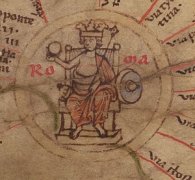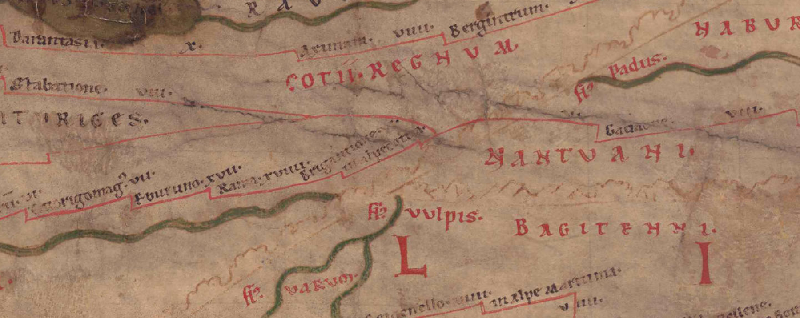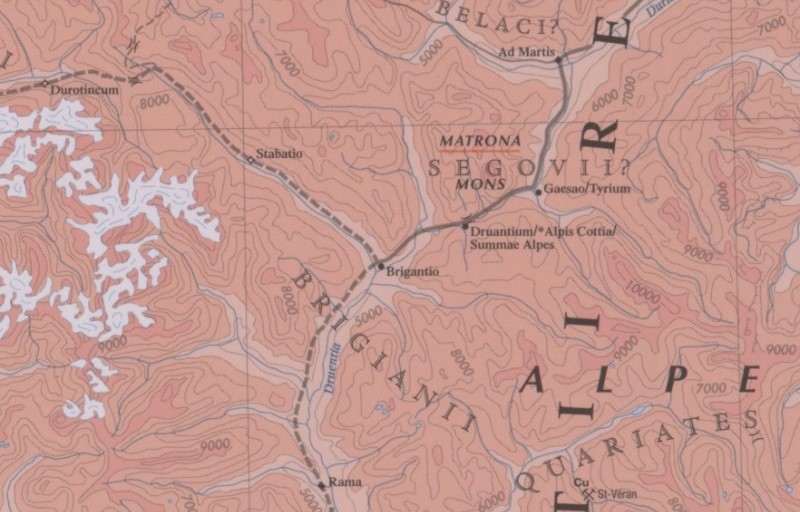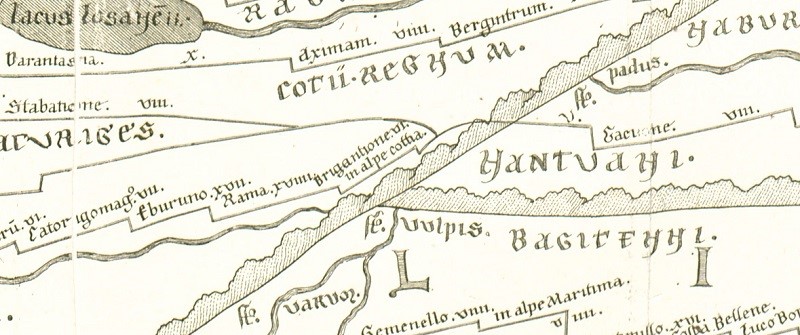
Tabula Peutingeriana – Einzelanzeige
| Toponym TP (aufgelöst): | Brigantione |
| Name (modern): | Notre-Dame de Briançon |
| Bild: |  Zum Bildausschnitt auf der gesamten TP |
| Toponym vorher | XVIIII Rama |
| Toponym nachher | XI In alpecottia (In Alpe Cottia) |
| Alternatives Bild | --- |
| Bild (Barrington 2000) |
 |
| Bild (Scheyb 1753) |
 |
| Bild (Welser 1598) | --- |
| Bild (MSI 2025) | --- |
| Großraum: | Gallien/Germanien |
| Toponym Typus: | Ortsname ohne Symbol |
| Planquadrat: | 2B3 |
| Farbe des Toponyms: | schwarz |
| Vignette Typus : | --- |
| Itinerar (ed. Cuntz): | Brigantione (341,5; 357,3), mansio Byrigante (555,11) inde ascendis Matronam (556,1) |
| Inschriften (EDCS-ID): | |
| Alternativer Name (Lexika): |
|
| RE: | Brigantio [1] |
| Barrington Atlas: | Brigantio (17 G2) |
| TIR / TIB /sonstiges: | Brigantio (TIR L 32, 40) |
| Miller: | Brigantione |
| Levi: |
|
| Ravennat: | Brincatione (p. 63.46) |
| Ptolemaios (ed. Stückelberger / Grasshoff): |
|
| Plinius: |
|
| Strabo: |
|
| Autor (Hellenismus / Späte Republik): |
|
| Datierung des Toponyms auf der TP: | --- |
| Begründung zur Datierung: |
|
| Kommentar zum Toponym: |
Kommentar (Talbert): |
| Literatur: |
Miller, Itineraria, Sp. 102. 228; |
| Letzte Bearbeitung: | 30.12.2024 10:51 |
Cite this page:
https://www1.ku.de/ggf/ag/tabula_peutingeriana/trefferanzeige.php?id=3279 [zuletzt aufgerufen am 13.12.2025]